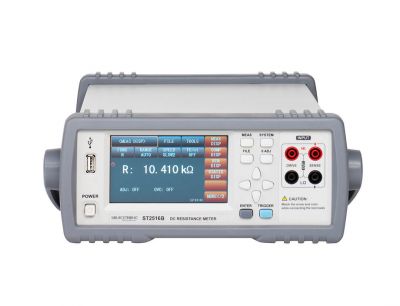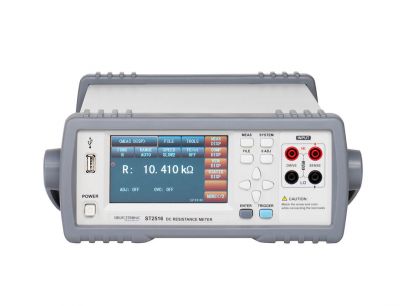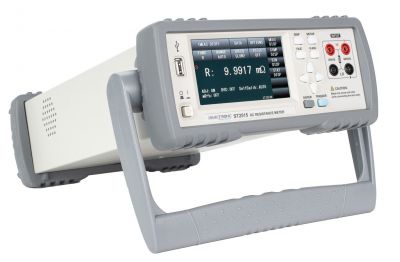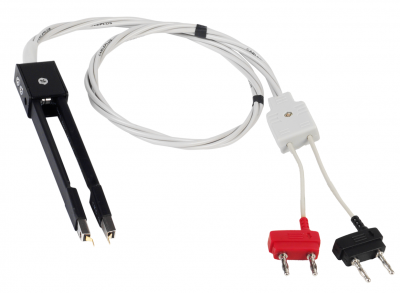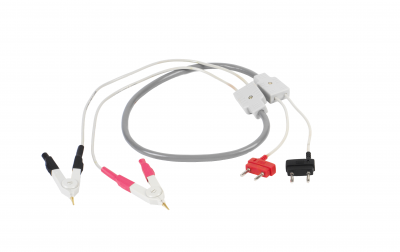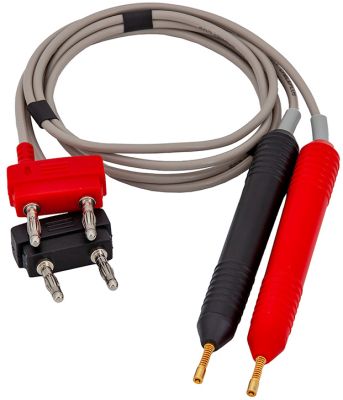Certified quality management system
Milliohmmeters
The milliohmmeter serves the high precision measurement of resistance. The milliohm meters 2515 and 2516 with high basic accuracy are ideal for use in laboratories, in the higher education sector or in production. There are resistance gauges with automatic range selection and hold function, which can operate in a particularly simple way. Moreover, all ranges also are manually adjustable. Most importantly, both milliohm meters have a special comparison function, a comparator with PASS / FAIL evaluation. This can automatically sort out BAD parts. It is a milliohm meter with a few extras, e.g. battery backup, password protection and speaker. The brilliant large screen is bright and clear and allows a wide viewing angle, ideal as a laboratory instrument or as milliohm meter in an automatic test system. The measurements of the milliohm meter can be quickly read out through the digital interfaces. The simple ohmmeter intuitive command set, which follows the SCPI standard, allows integration into existing instrumentation. The whole thing is controlled either via external, internal or fuzzy trigger. All in all, it is a very low resistance ohmmeter with four-wire measurement procedures, a powerful resolution and a high current measurement for measuring small resistances. Milliohm meters of this type are ideal for laboratory applications for the automotive industry, aircraft construction, the quality testing of mechanical connections and contacts, in automatic test systems and anywhere else where low-resistance measurement is needed.
+49 421 277 9999
- Measurement display range: 1µΩ - 20kΩ
- Basic Accuracy: 0.1%
- 4.3" color-touch-display
- Resolution: 1µΩ
- Interface: Handler, RS232C, USB
- Measurement display range: 1µΩ - 2MΩ
- Basic Accuracy: 0.05%
- 4.3" color-touch-display
- Resolution: 10µΩ - 10Ω
- Interface: Handler, RS2323C, USB
- Temperature measurement
- Measurement display range: 0.1μΩ -110MΩ
- Max. Accuracy: 0.01%
- 4.3" colour-touch-screen
- Resolution: 0.1µΩ (resistance)
- Interface: LAN-LXI, RS232, USB HOST, USB Device, GPIB (option)
- Temperature accuracy: 0.1°
- Robust 19" mounting frame
- Metal powder coated
- Device mounting front side
- Devices: ST2830, ST2515, ST2683, ST2516
- Color: RAL7035 light gray
- Height: 3 HE
- 4-wire-measurement
- Kelvin test leads with banana plug
- Contacts are gold plated
- Cable protection
- Jaw dimension: 10 mm long, 2.5 mm wide, 2 mm high
- Devices: ST2515, ST2516
- 4-wire-measurement
- Kelvin test leads with banana plug
- Contacts are gold plated
- Cable protection
- Jaw dimension: 10 mm long, 2.5 mm wide, 2 mm high
- 4-wire-measurement
- Kelvin test leads with banana plug
- Contacts are gold plated
- Cable protection
- Jaw dimension: 10 mm long, 2.5 mm wide, 2 mm high
A milliohmmeter is a precision instrument for measuring the variety of the smallest resistance values in different circuits. The milliohmmeter takes its name from the Ohm, the unit for electrical resistance. Millioh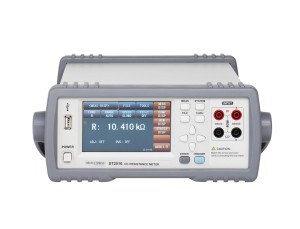 mmeters are used instead of conventional ohmmeters where they are required to measure resistance limits at the lower end of the scale, of only a few ohms. At this level the intrinsic resistance of the ohmmeter , the leads and contacts, can distort the readings and affect the results. For precise measurement of such small resistances only a milliohm meter can be used. The modern meters usually have both digital read outs as well as LCD displays. Micro-ohm meters can be included in the measurement range if they have a high degree of accuracy. The measuring of milliohmmeters generally covers micro-ohms to megohms. In contrast to the milliohm meter there are mega-ohm meters which measure ranges in the region of kilo-ohms to peta-ohms.
mmeters are used instead of conventional ohmmeters where they are required to measure resistance limits at the lower end of the scale, of only a few ohms. At this level the intrinsic resistance of the ohmmeter , the leads and contacts, can distort the readings and affect the results. For precise measurement of such small resistances only a milliohm meter can be used. The modern meters usually have both digital read outs as well as LCD displays. Micro-ohm meters can be included in the measurement range if they have a high degree of accuracy. The measuring of milliohmmeters generally covers micro-ohms to megohms. In contrast to the milliohm meter there are mega-ohm meters which measure ranges in the region of kilo-ohms to peta-ohms.
Milliohmmeter Applications
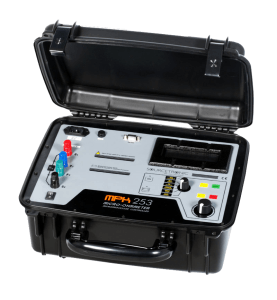 The milliohm meter is commonly used for monitoring production processes and for quality assurance. For detailed measurements relay coils, generators, switches, connectors, transformers, parallel and secondary circuits and platinum wires are removed. Many of the available milliohmmeters on the market have an RS232 interface connection for transferring measurements to computers and printers. The computers require additional software to read the data. As well as reading very low resistance levels, milliohmmeters must also be able to record these over a very short period of time, sometimes less than 100 milliseconds. Additionally, some milliohm meters have a comparator function, which can detect mean deviations and when parameters are exceeded. Other milliohmmeters can also measure voltages as frequencies. The exterior casing of many milliohm meters has been designed to be splash-proof, which extends their uses to include, ships, planes and mines.
The milliohm meter is commonly used for monitoring production processes and for quality assurance. For detailed measurements relay coils, generators, switches, connectors, transformers, parallel and secondary circuits and platinum wires are removed. Many of the available milliohmmeters on the market have an RS232 interface connection for transferring measurements to computers and printers. The computers require additional software to read the data. As well as reading very low resistance levels, milliohmmeters must also be able to record these over a very short period of time, sometimes less than 100 milliseconds. Additionally, some milliohm meters have a comparator function, which can detect mean deviations and when parameters are exceeded. Other milliohmmeters can also measure voltages as frequencies. The exterior casing of many milliohm meters has been designed to be splash-proof, which extends their uses to include, ships, planes and mines.
Milliohmmeter Construction
The principle of a milliohmmeter is to use the way that a transistor reasons, to measure cables and contacts. With a constant current flow, i.e. a constant current and an upstream digital voltmeter, this will provide a simple but effective milliohmmeter. Milliohmmeters are usually constructed as a four point measuring device. This gets around the problems caused by the intrinsic resistance of power cables and contacts in a two point measurement, by avoiding, or adjusting for errors. As the voltage drops at the resistor the current can be tapped and fed into a voltmeter. Then, by knowing the current and measuring the voltage at the voltmeter the resistance (R) can be calculated using Ohm’s Law as the voltage (U) divided by the current (I). The secret of the four point technique is to use separate paths along which to measure the current and the voltage drop.

